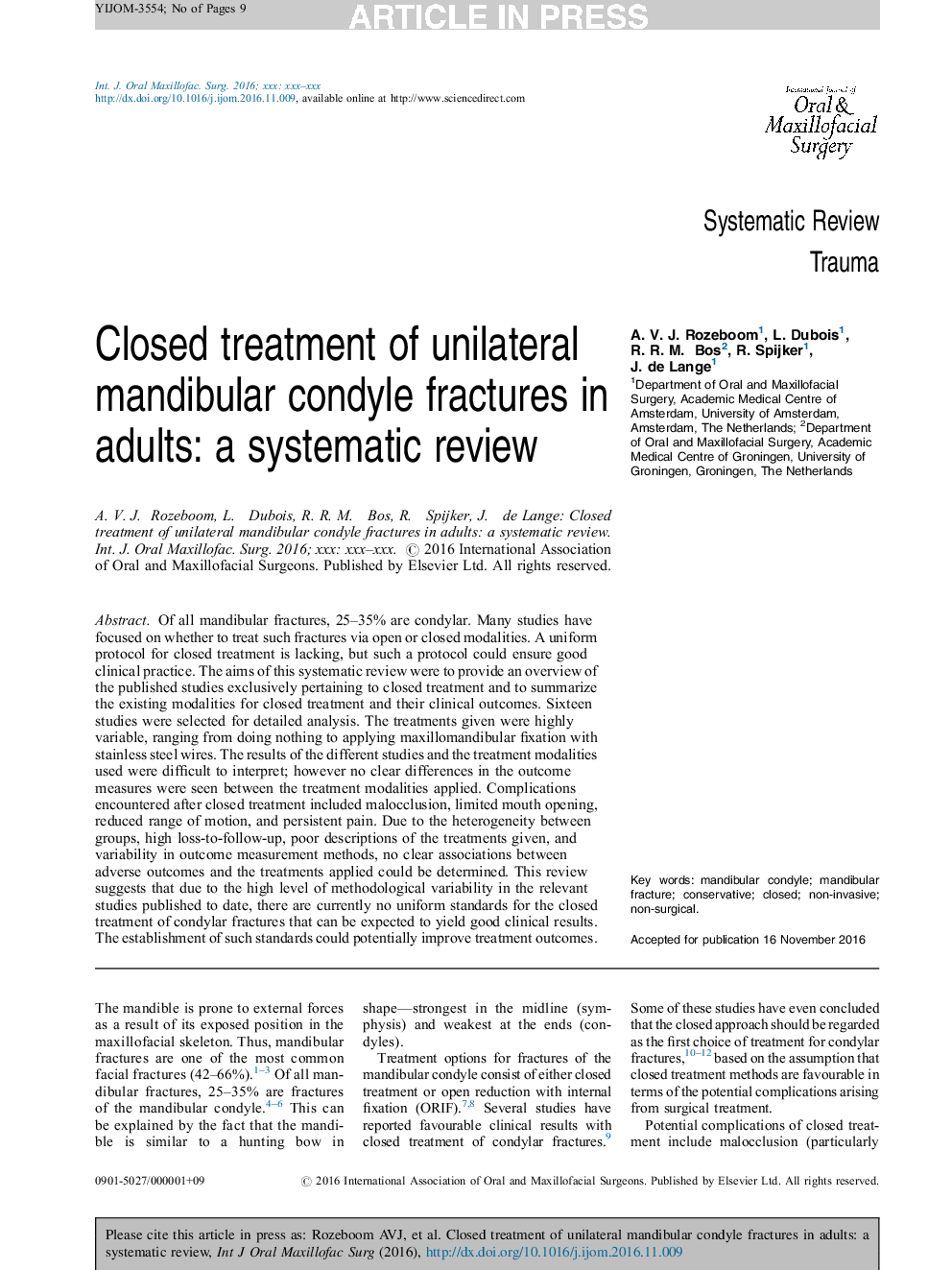| Article ID | Journal | Published Year | Pages | File Type |
|---|---|---|---|---|
| 5639256 | International Journal of Oral and Maxillofacial Surgery | 2017 | 9 Pages |
Abstract
Of all mandibular fractures, 25-35% are condylar. Many studies have focused on whether to treat such fractures via open or closed modalities. A uniform protocol for closed treatment is lacking, but such a protocol could ensure good clinical practice. The aims of this systematic review were to provide an overview of the published studies exclusively pertaining to closed treatment and to summarize the existing modalities for closed treatment and their clinical outcomes. Sixteen studies were selected for detailed analysis. The treatments given were highly variable, ranging from doing nothing to applying maxillomandibular fixation with stainless steel wires. The results of the different studies and the treatment modalities used were difficult to interpret; however no clear differences in the outcome measures were seen between the treatment modalities applied. Complications encountered after closed treatment included malocclusion, limited mouth opening, reduced range of motion, and persistent pain. Due to the heterogeneity between groups, high loss-to-follow-up, poor descriptions of the treatments given, and variability in outcome measurement methods, no clear associations between adverse outcomes and the treatments applied could be determined. This review suggests that due to the high level of methodological variability in the relevant studies published to date, there are currently no uniform standards for the closed treatment of condylar fractures that can be expected to yield good clinical results. The establishment of such standards could potentially improve treatment outcomes.
Related Topics
Health Sciences
Medicine and Dentistry
Dentistry, Oral Surgery and Medicine
Authors
A.V.J. Rozeboom, L. Dubois, R.R.M. Bos, R. Spijker, J. de Lange,
